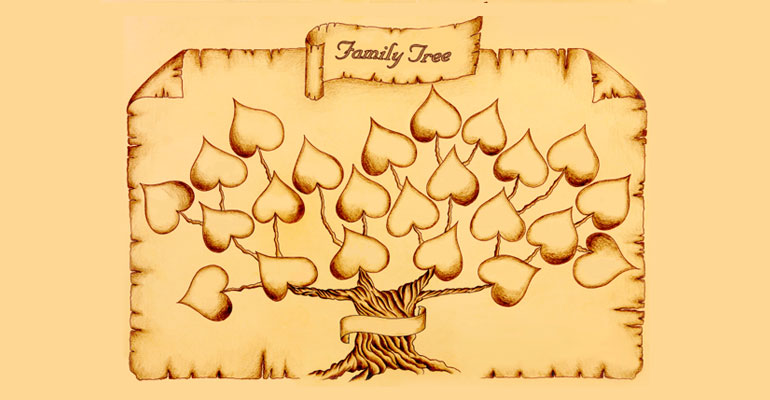Teachers rarely recognize the dilemma the family tree — an age-old assignment — poses for most adoptive families. Your first impulse is to defend your child, but you can turn it into a positive experience for her —and your family.
By age eight, kids understand that they really have two family trees, whether their adoption is open or closed. In open adoptions, a child has options. I recommend talking with your daughter about various approaches, all of which can lead to an exploration of her history and of the impact of genetics (where she got her blue eyes, for instance) versus environment (where she got her interest in music). Be sure to leave the final decision to her.
Your child’s options
Some children decide to make a tree that shows only their birth family. Even if this makes you uncomfortable, you should support her decision.
Lauren, a nine-year-old Latina I worked with, told her parents, “It would be dishonest to say I’m Irish and Polish, like you!” As she worked on the assignment, she needed more information, so she and her mom called her birth mother. It became a true family project — as it is in biological families when children ask extended family members for help in completing their tree.
Some kids choose to make two trees that include both families. This is a good solution because both families are real to your child, and both contribute to her identity. Kids can create several branches — one for each parent — or place their adoptive family in the branches and their birth family in the roots.
Often children choose a tree that shows only their adoptive family. After all, your daughter became part of your family’s life when you adopted her. This is a good opportunity to talk again about her adoption and the permanence of your family.
A public discussion
However she chooses to fill out her tree, chances are, your daughter will have to share it with the class once it is due. This may lead to an adoption discussion or questions from your child’s peers, especially if your daughter includes both families in her tree.
A 10-year-old I knew, Anna, wanted to include her birth family in her tree, but she had very little information. After struggling for days, and having several discussions with her family, she decided to create a tree of her adoptive family because she didn’t want to share her adoption story with her classmates.
Ask your daughter how she would feel about a class discussion. She may decide that she’s OK with it. If so, ask whether she would like you to come to school with her that day. Kids can better understand concrete details, rather than abstractions, so she may want to bring in photos or a keepsake her birth parents gave her for show-and-tell. You might also want to talk with the teacher in advance.
One question classmates may ask when they see a combined family tree is, “Who’s your real mother?” It’s important to answer that both sets of parents are real, and that they play different roles in her life. For example, you and your spouse are the real parents who are raising her. When open adoption is explained in this natural way, classmates often think its cool to have extra parents who call or visit and who send gifts on holidays and birthdays. Again, the choice is your daughters. She may — or may not — be ready to go public with her adoption story.


